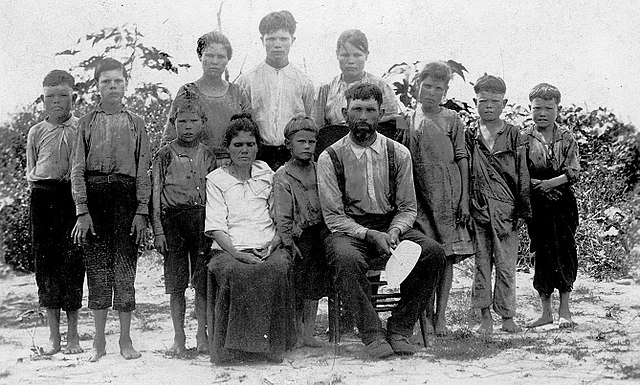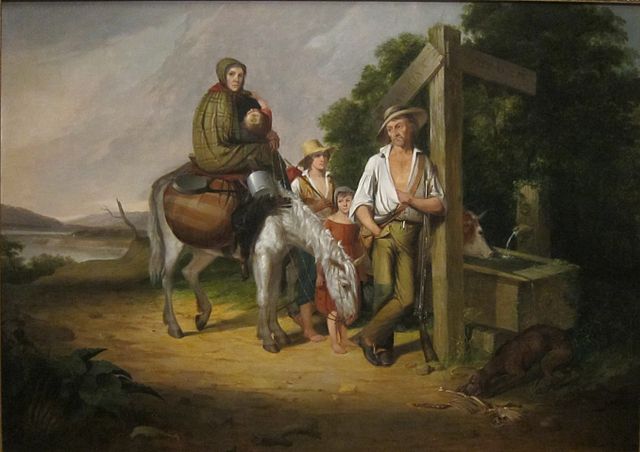White trash is a derogatory racial and classist slur used in American English to refer to poor white people, especially in the rural areas of the southern United States. The label signifies a social class inside the white population and especially a degraded standard of living. It is used as a way to separate the "noble and hardworking" "good poor" from the lazy, "undisciplined, ungrateful and disgusting" "bad poor". The use of the term provides middle- and upper-class whites a means of distancing themselves from the poverty and powerlessness of poor whites, who cannot enjoy those privileges, as well as a way to disown their perceived behavior.
This poor white family from Alabama was presented in 1913 as "celebrities" because they had escaped the debilitating effects of hookworm disease, which, along with pellagra was endemic among poor Southern whites due to poor sanitation and the phenomenon of "clay eating" or "dirt eating" (geophagia).
Puerto Rico (circa 1899): "The farming class is about on a par with the poor darkies down South, and varies much even in race and color, ranging from Spanish white trash to full-blooded Ethiopians."
Dorothea Lange's 1936 photograph of Florence Thompson, a migrant worker in California during the Great Depression, along with three of her children. The photo is known as Migrant Mother
Poor White is a sociocultural classification used to describe economically disadvantaged Whites in the English-speaking world, especially White Americans with low incomes.
Portrayals of Poor Whites in U.S. state of Georgia, as illustrated by E. W. Kemble, circa 1891
North Carolina Emigrants: Poor White Folks, by James Henry Beard, 1845, Cincinnati Art Museum
Elvis Presley, an icon of 20th century America, was born into a Poor White family in Tupelo, Mississippi.
Poor White sharecroppers in Alabama, 1936







